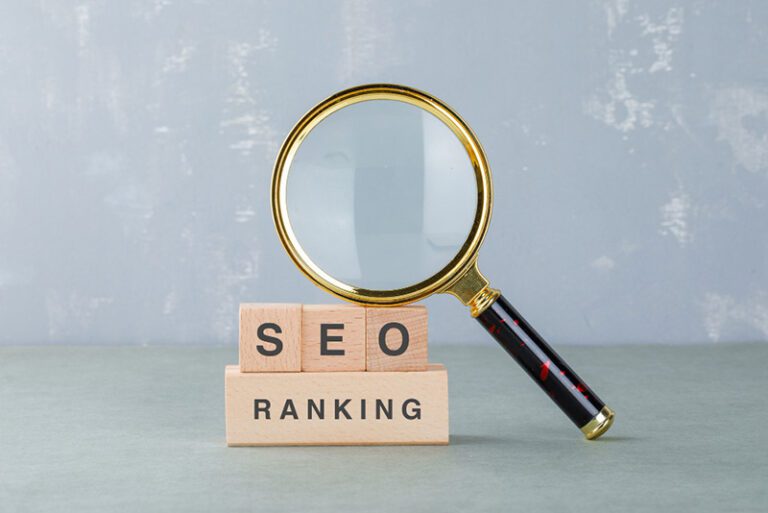The perils of friends who build websites

We’ve built many websites, and thankfully we can boast of many satisfied customers in Stockport and beyond. We understand that a website is a tool, an integral cog in the inner workings of a business. It’s there to play an active role in marketing, in sales, and even in admin functions. Let’s face it, your website is, or will become, integral part of your team.
So we find it rather bemusing when we hear of people leaving their website in the hands of “that friend of a friend who knows about computers”, or “the next door neighbours’ kid who is a bit of a wizz”, or “my in-law/cousin/best mate’s partner who works in IT”. Now if your friend/neighbour’s kid/cousin etc knows what they are doing when it comes to website design, then they probably can build you a website. And they can possibly do it on the cheap too. But there are perils to this approach, and here are some of the pitfalls to watch out for. These have been compiled from true stories, customers who have come to us after having the geek-next-door experience. (that’s not a dig a geek’s by the way – geek’s are great. I consider myself a proud geek. Geek’s will rule the world one day, before the bees take over).
Peril 1. Domain Ownership assigned to the website builder and not you.

When a customer comes to us asking us to take over a website they’ve had built from someone else, one of our first questions is “who is the domain registered to?”. If this question doesn’t mean anything to you, then let me provide a bit of high-level background:
The responsibility for organising all the top-level domains on the internet, such as .com, .net and .uk fall to an organisation called ICANN. Their role is to ensure an orderly, systematic approach to the domain names on the internet. Domain names are then maintained on a registry at a regional level. In the UK, that’s privilege falls to a company called Nominet. Nominet maintain the registry of all domain names ending in .uk (as well as some others including .wales and .cmryu). However, you don’t buy domain names directly from Nominet. You have to go through a Registrar – companies who update the Nominet registry for you, such as 123-reg, and IONIS (formerly 1&1 internet).
When you register a domain name, you effectively rent it for a period of time. And during this time, you have the rights to use that domain name for your e-mails and point it to your website. And here’s the crux. If the domain name is registered by the web designer, in his or her own name, then you don’t have the rights, they do.
The details of who is registered can be changed, usually in the control panel of the registrar’s website. But you’ll need to know the username and password to access the registrar’s site, and if your site builder has gone awol with this information, and the domain is registered in his/her name, then you’re going to struggle to get this back. It’s not impossible, as Nominet do provide a dispute resolution service, but it’s time consuming, and may have costs involved.
How to avoid: Register the domain name yourself. It’s easy to do and inexpensive, and a .co.uk costs around £12-15 per year. You’ll need to share the login details with the person who creates your website, but at least it’s registered in your name.
Peril 2. Not knowing where your site is hosted

Every website consists of a set of coded files, and maybe a database, which live on a computer (called a server) connected to the internet. This is called Hosting. The computer can be anywhere in the world. If you use a professional hosting company, then the computer is likely to be in a large “server farm” with high level security, dedicated power supplies, and multiple copies of your website in other sites. At the other end of the spectrum, it can be a computer sitting in someone’s bedroom.
The importance of good, no, great hosting, should not be underestimated. It can affect your site speed, and also how well your site ranks with Google and other search engines. The hosting provider also dictates how many visitors your website can handle. If you’re business takes off, then you’l need a good host to manage all the traffic.
The problem is that not all hosting providers are the same. And if you leave it to the geek-next-door, you’re likely to end up with what you pay for – the cheapest service, but not fit for purpose. This can often lead to unexpected and undesirable consequences. We’ve seen websites black-listed by Google simply because they are sharing the same server as a naughty (illegal) spam website. We’ve also seen websites hijacked by spam software because the hosting was not secure.
You need to know where your website is hosted, and how to get in touch with the host for when problems arise. Ideally this will be dealt with by your website designer, if you have a support agreement in place with them (see below).
How to avoid: Discuss the hosting up front with your website builder. Make sure they give you details of where the site is hosted and who you need to get in touch with in case of issues. Make sure you have a support agreement in place for after your website has gone live.
Peril 3. building a website vs designing a website

This is one of the biggest problems we come across. We’ve had numerous customers who have had a website built, but then found that it’s not fit for purpose. Here are real world scenarios that we’ve come across in our own studio.
Design Disasters.
On numerous occasions we’ve come across websites that are design disasters. The website developer is clearly a technical genius, a programming wizz kid. But they didn’t understand the business they were building the website for; they didn’t work out what the customer journey was. They didn’t think about the typical customer of that business. And so they built a website that just didn’t meet the business need.
Building a website is more than knowing how to code the website. The look and feel, the interaction it offers, the navigation around the website are all highly important aspects that affect the user experience, and they need to be considered from the outset. If your perfect customer lands on your website, you need to wow them in the first instance. They need to feel a sense of excitement that when they find your business website – a feeling that tells them you are about to solve a problem for them. There are so many factors that go into creating this subliminal emotion – the colours, the fonts, the amount of text, the quality of the images and the content itself. All too often we come across websites built by people who know how to build websites, but not how to design them.
Unchangeable Content
Making the site look and feel right is the job of the website designer. The content on the site is yours however. You know your business better than anyone else. So you need to make sure you can add and change the content on your site, to adapt as your business changes. For example, you may want to add seasonal content, or throw a summer sale. When you add a new product or service, you want your site visitors to know about it. And when you win an award, or have some other great news to share, you want to shout about it on your website. And be sure people who hear about your great news will head to your website to find out more.
Unfortunately, we’ve seen too many cases where the business owner doesn’t have the ability or the knowledge to add and change their own content. The business owner and the site builder may as well be on different planets. We’ve even seen cases where the site looks great, but all the content has been “hard coded” into the site, meaning you’ need a computer science degree to be able to change anything.
This is a disaster as far as your website goes – especially for your SEO – Search Engine Optimisation, the art of getting Google to show your site when people search for topic that are relevant to your business. If you can change your content, then your hands are tied as far as getting Google to better understand what your site has to offer.
Mobile Mayhem
Almost half the time spent online today is via a mobile phone rather than a desktop or laptop screen, and the trend is set to continue. That’s why it’s important that your website works just as well on a mobile screen as it does on a tablet or laptop screen.
A decade ago, when the iPhone was first released, you would use two fingers to pinch and zoom your way around a website. Websites just weren’t built for mobiles. Now, as we approach the third decade of the century, web design has moved on – we now have a philosophy called Responsive Design. This is a method of designing websites so that they adapt to the screen size they are being viewed on. With a responsively designed website, your visitor will be able to consume your content on any popular screen size.
Being able to design a website for mobiles is a constantly evolving discipline in website design and coding. If the geek-next-door doesn’t build websites very often, then it’s possible they may not know how best to tackle varying mobile screen sizes. And a website that doesn’t work well on mobiles is a website that doesn’t work well for your customers.
How to avoid: Be very clear up front with your website builder as to what you expect. Have a good idea of the look and feel that you want to go for. Be explicit about how much control you expect to have over your content. And know your customer, and how you expect them to interact with your website. Once you have this knowledge, convey it clearly to your website builder, and ask them if they understand what you need. Always ask to see websites they have already built.
Peril 4. Not getting the feedback you deserve

A website is not just a means to an end. It’s the start of a journey. The adventure starts when the website goes live. Then you get visitors. Visitors interact with your website. They click from page to page, consuming your content. But if that’s all you know about your site visitors, then it’s like driving in the dark with no lights on and no map.
To really understand what your site visitors are doing, you need feedback. You need to know how they get to your site, which pages are the most popular, how long they spend on the site, where they are physically located on the planet, what devices they use, what time of day they visit, etc. Feedback like this is invaluable to making sure your website is meeting the needs of your potential customers.
Thankfully, this information is readily available with tools such as Google Analytics, as long as the website is built and configured properly. If the person who builds your website doesn’t give you at least the basic analytic data for feedback, then it’s like being a stand-up comedian but not being able to see or hear the reactions of your audience. You just wont know if you are hitting the mark or not.
At Nettl of Stockport, we connect Google Analytics with all the websites we build by default, because we know the importance of knowing the facts and not just speculating.
How to avoid: Ask the person who builds your website to integrate Google Analytics and show you how to view and understand the data it collects.
Peril 5. After care & support – being left to fend for yourself

We’ve saved the best (or should that be worst?) to last. Once the website goes live, that’s not the end of the job – it’s the start of an ongoing relationship between you and your website designer. The internet is a fast changing place, and since by definition your website lives on the internet, it needs to keep up with these changes. What kind of changes are we talking about? Here are a few examples:
- Security updates – new security holes are being discovered all the time, and it’s a continuous activity to ensure these holes are plugged – especially on an e-commerce site. Even if your website doesn’t offer e-commerce, it could still get hacked, causing you stress and reflecting badly on your business.
- Browser changes – Google Chrome, Microsoft Edge, Firefox, Safari – all these browsers are constantly evolving, and websites may need updating to ensure they work across browsers.
- Platform updates – tools like WordPress are being updated regularly, sometimes weekly. The updates can bring performance improvements, new functionality, security patches and more. These updates need to be added to a website in a controlled manner to ensure the site still works as expected after the update.
It’s similar to the apps on your smartphone. Every so often, you need to update them, and occasionally the updates stop the app or your phone working as expected. So it is with websites and this is why you need on-going technical support. Effective support requires a financial commitment and a time commitment.
Unfortunately the geek-next-door probably doesn’t have the time to give you that commitment. Common excuses are “sorry I have to concentrate on my day job”, or “sorry I’m off to Uni”, and even “Sorry I’ve left the country” (true stories!). All too often the business owner is left fending for themselves, in the sea of website coding, and technical mumbo-jumbo. What turned out to be a cheap website done by “someone who knows about computers” becomes an unnecessary time and resource drain. We’ve even seen it strain lifelong friendships.
How to avoid: Make sure your website builder is going to be around to support you in years to come – this discussion needs to be had before you commission any work.
The Nettl way…

So there you have it, the 5 perils of getting friends (or friends of friends) to build your website, as experienced by our own customers (before they were our customers of course!).
That’s not to say that it can’t work out – it can. But if you follow the tips above, you’ll have a much easier time in the long run. Alternatively, call in to Nettl of Stockport, and let us show you another way. It’s probably not as expensive as you think, but we can assure you the ride will be much smoother!





